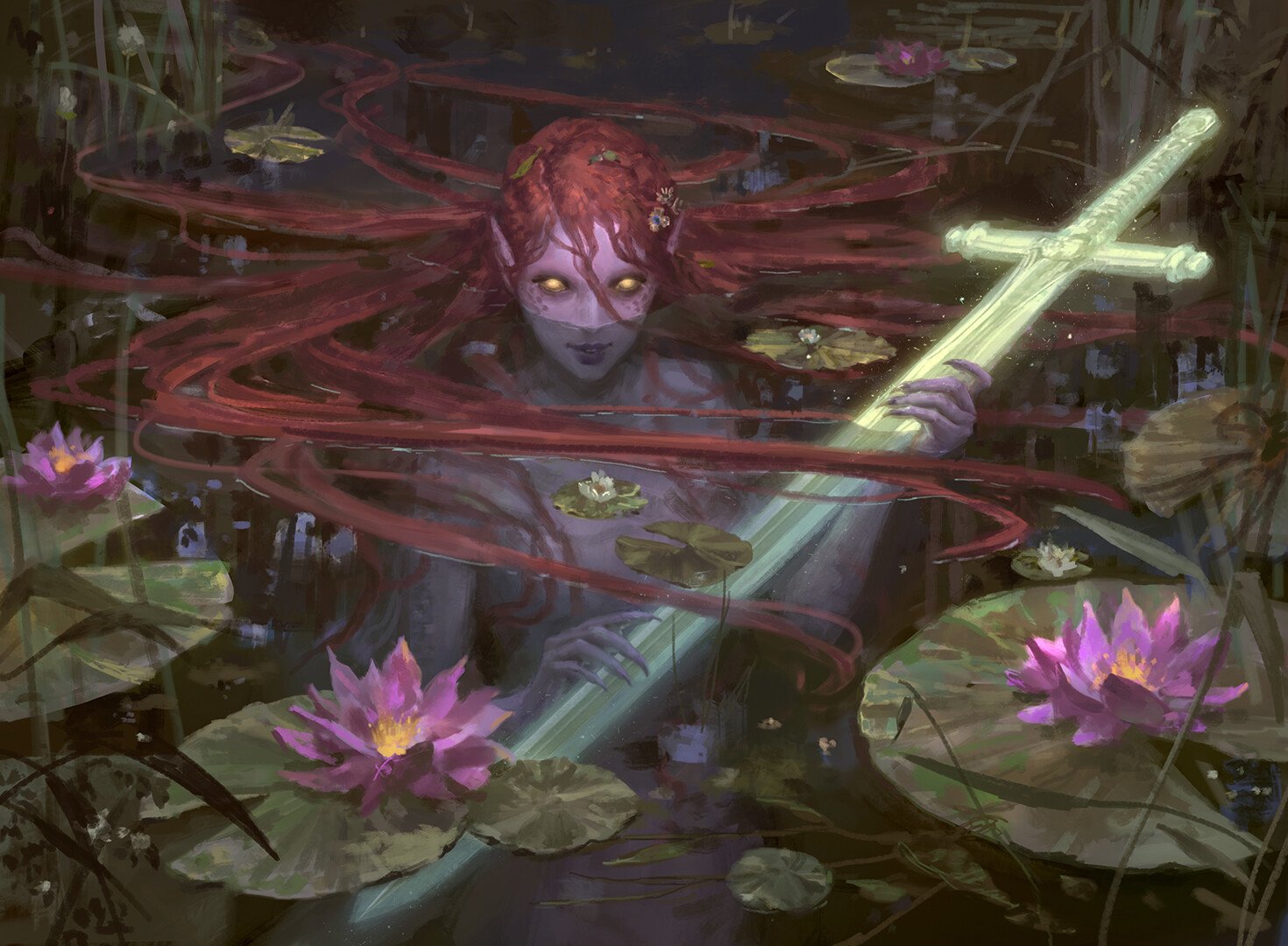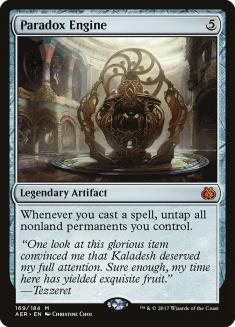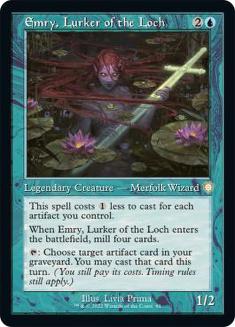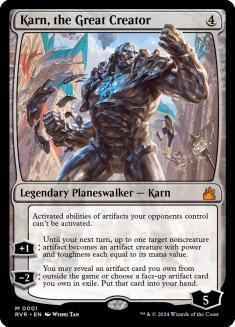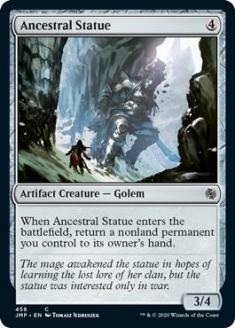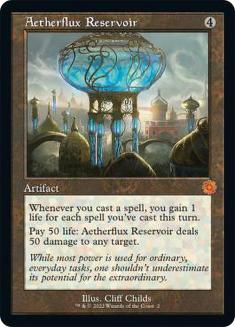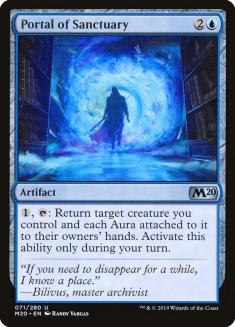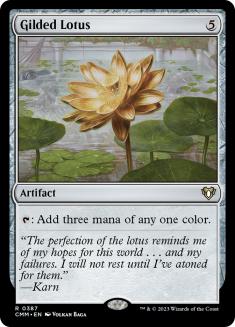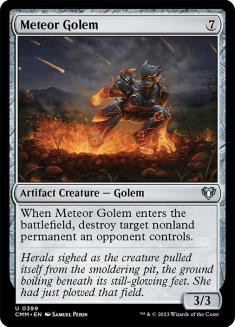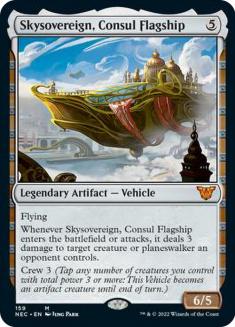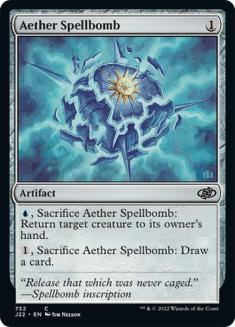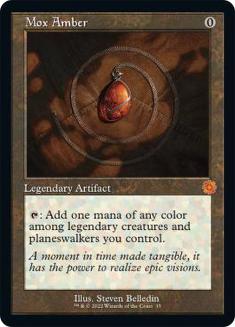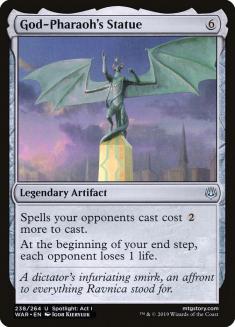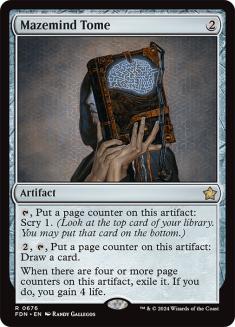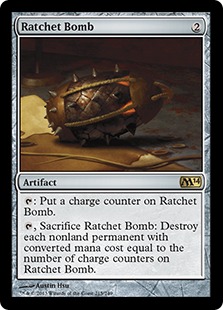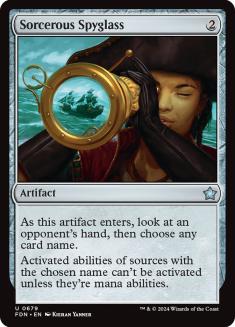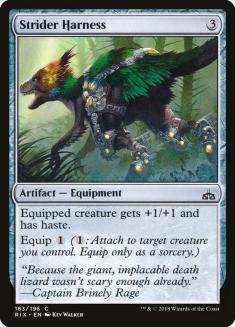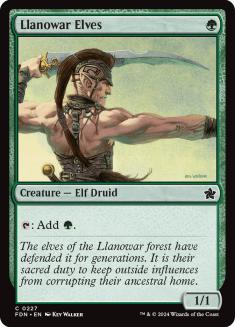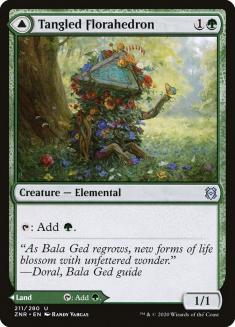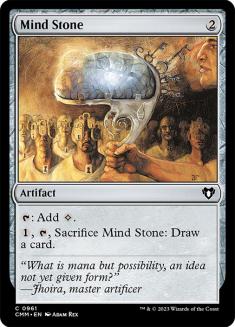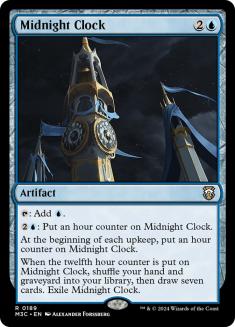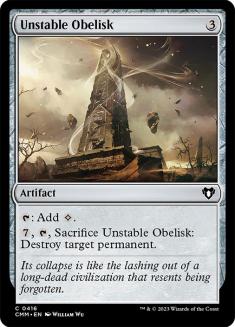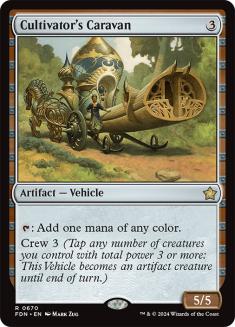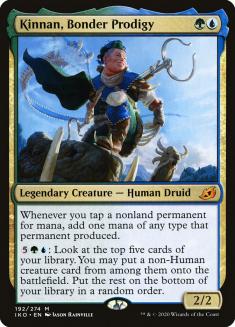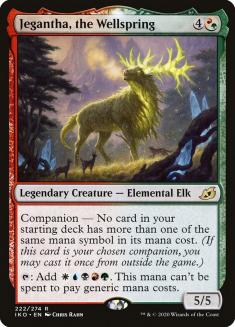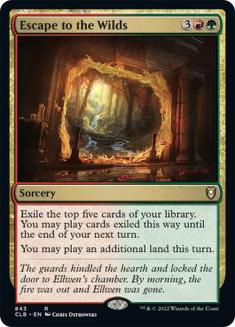Kaladesh Remastered promised to reopen the Inventors’ Fair — with most of the block’s quirky but powerful artifacts making their return, it seemed like a great time to be a combo enthusiast in Historic. As Aetherworks Marvel failed to deliver on the early hype and Inspiring Statuary was removed before it could cause any mischief, it fell to Commander menace Paradox Engine to let its freak flag fly in Constructed for the first time.
Creatures (15)
Planeswalkers (5)
Lands (19)
Spells (21)

Kai Budde didn’t fill a cabinet with Pro Tour trophies by playing wacky combo decks, so his choice for the Zendikar Rising Championship raised a lot of eyebrows. In retrospect, Shaheen Soorani setting down his Snapcaster Mages for Krark-Clan Ironworks was the first definitive sign that deck was broken, and Simic Paradox Engine certainly has the same vibe. Though Kai’s tournament was derailed by the Standard portion, Ironworks master and combo expert Matt Nass and friends refined the deck for the Arena Open last weekend and were handsomely rewarded.
Creatures (15)
Planeswalkers (7)
Lands (22)
Spells (16)

Most combo decks either have a singular focus on assembling a combo with their namesake cards (think Ad Nauseam or Oops All Spells in Modern) or have a web of interlocking pieces that let them shift resources around quickly to move towards a desired end state (such as Elves Combo in various formats over the years). Simic Paradox Engine blurs this distinction — it is both an Engine deck and an engine deck — and understanding both aspects is crucial to unlocking its full potential. Though Paradox Engine is clearly and exclusively a ‘combo card,’ its partners in crime allow the deck to play a well-rounded game that’s harder to attack.
The most obvious way to exploit Paradox Engine is an infinite loop and it’s easy to achieve that in Historic with Emry, Lurker of the Loch:
- Paradox Engine + Emry + two Mox Amber = infinite mana + spell count.
- Paradox Engine + Emry + an artifact that draws a card + some amount of mana from nonland sources (one for Chromatic Sphere, two for Aether Spellbomb, three for Mind Stone) = you draw repeatedly until you find Mox Amber to generate infinite mana and a mana sink.
Emry not only participates in these loops but makes them much easier to assemble. Mox Amber makes Emry cheaper and it repays the favour by enabling the Mox, putting Paradox Engine’s hefty sticker price in closer reach. Chromatic Sphere turns Emry into a card advantage machine that lets you keep up on that axis against decks like Sultai Midrange or Azorius Control. Emry also ensures that a draw that does rely on Paradox Engine isn’t foiled by a single Disdainful Stroke or Wilt and helps to overload more versatile removal like Abrade. Its self-mill trigger unearths targets for itself but also for Bala Ged Recovery and Tamiyo, Collector of Tales (note that multiple copies of either can set up their own Engine loop) and makes finding and escaping Uro, Titan of Nature’s Wrath a faster backup plan.
A big draw to Simic Paradox Engine is that it’s currently the best — and perhaps only — home for Karn, the Great Creator in Historic. In addition to its familiar use of finding hate cards against linear decks — aided by the various acceleration you already want to play — Karn grabs a central combo piece in Paradox Engine as well as a variety of cards that make Engine tick.
- Ancestral Statue can pick up and redeploy Karn fetching Portal of Sanctuary, returning Statue. Casting Statue then untaps Portal with Paradox Engine, letting you repeat this to call up your entire bench with Karn. This allows you to win through or ignore multiple pieces of permanent hate (such as Yasharn, Implacable Earth or Rest in Peace). Statue can convert a Karn activation into a Tamiyo activation, a self-mill or draw trigger with Emry or Uro, and so on.
- Portal also opens up another loop to draw your deck with Uro (bouncing Uro in response to the sacrifice trigger in each cycle since you can activate it at any point during your turn) and a cheaper infinite mana loop by bouncing and recasting Llanowar Elves or Emry even when summoning sick (looping Emry also lets you mill your deck if you have a Bala Ged Recovery or Tamiyo but no payoff yet).
- Mox Amber is a crucial piece in certain combo lines but also the best card in many opening hands, so having to sideboard a copy is a real sacrifice. Without Amber you would still want an artifact with converted mana cost zero to maximize mana generation with Engine via Karn.
- Skysovereign, Consul Flagship is an excellent tool that often becomes the main focus of ‘fair’ games. It shines in the mirror, shooting important creatures like Emry or Kinnan while pressuring Karn (you can animate it with your own Karn’s +1 ability to get around not being able to crew). Crewing Skysovereign is difficult but Uro can do that during its brief window on the battlefield. Against Sultai or Four-Colour Midrange, Skysovereign lines up perfectly against Nissa, Who Shakes the World. Nissa going to six loyalty and making a 3/3 usually allows it to survive the turn but Skysovereign is just large enough to kill both Nissa and the land if cast in advance and it’s one of the few cards that can break serve against Nissa from behind — all while dodging most common interaction including Fatal Push, Eliminate, and Aether Gust. Similarly, Skysovereign contains Narset, Parter of Veils and Teferi, Hero of Dominaria against Azorius Control without caring about Wrath of God.
- Strider Harness and Crystal Slipper are narrow but theoretically open up combo lines where you need to grant Emry haste.
- Aether Spellbomb is a cheap defensive target that can lock out decks like Azorius Auras in conjunction with Emry or protect a key creature (including Skysovereign or an artifact animated by Karn) from removal.
- God-Pharaoh’s Statue and God-Pharaoh’s Gift are other high-impact Karn hits when the combo is off the table. Gift can represent Emry with haste.
- Gilded Lotus is the biggest mana rock to pair with Paradox Engine.
- Aetherflux Reservoir is an unnecessary but efficient way to win under the constraints of the Arena timer.
Emry and Karn offer deterministic kills with Paradox Engine but you often have to play around disruption or navigate an uncertain sequence until you have enough resources to demonstrate a loop. In these situations, careful planning around Paradox Engine is critical. For example, it may be better to hold a cheap spell rather than using your mana efficiently so that if you draw Paradox Engine next turn you have another set of untap triggers. In these manual combo turns, you should place a high premium on cards that represent several spells (Uro, Bala Ged Recovery / Tamiyo, Karn, Aether Spellbomb on your own creature) or replace themselves (Uro, Chromatic Sphere, Mind Stone) to keep the chain going.
The rest of the deck largely functions as a support system to enable these cards but even here we find some unconventional choices:
Decks that want to jump ahead on mana tend to commit to one type of ramp — mana creatures, mana rocks, land searchers, extra land drops — as these drag you in different directions and you don’t want to add unnecessary exposure to a new form of interaction. Simic Paradox Engine doesn’t care what you are as long as you tap for mana, resulting in some unlikely comrades uniting under one banner. Gilded Goose stands out as a missing one-mana accelerant, but the limited Food supply prevents it from working indefinitely with Paradox Engine.
These are sometimes seen in small numbers as additional ramp. Midnight Clock threatens to break open grindy games, Unstable Obelisk gives more corner-case outs (against the Nine Lives + Solemnity combo if Karn, the Great Creator is shut off by Gideon’s Intervention, for example) and a late-game lock with Emry, and Cultivator’s Caravan is most consistently strong (tapping for coloured mana is important especially when casting Uro multiple times on Paradox Engine turns).
Kinnan, Bonder Prodigy is an absurdly pushed design yet somehow isn’t on the list of most egregious Simic cards printed since 2019. Kinnan isn’t a flagship card for Simic Paradox Engine but it ties the room together; it boosts your legend count enough to justify putting Mox Amber in your deck before making it even better and it supercharges your various ramp cards while giving you a use for that mana (and an infinite mana sink for some Engine lines). This deck has no giant creatures to cheat in via this ability but Uro is often enough to stabilize the game and Emry can range from ‘just’ a strong threat to immediately lethal.
If you want to win in Constructed in 2020, you play Uro until they don’t let you. Uro’s utility is more polarized here than in a deck like Sultai Midrange as you don’t fill your graveyard by playing normal Magic in the same way and your deck is intentionally full of permanents that want to remain on the battlefield instead, but you can stock your graveyard suddenly with Emry or Tamiyo — Matt Nass escaped Uro on Turn 3 on stream against Gruul Aggro en route to cashing the Arena Open last weekend.
On top of its overdetermined title as the biggest mistake of the year, Uro serves specific, useful roles in this deck. When you have a lot of moving parts that don’t always play well together and rely on other cards to function, a reliable tool that gives you a bit of everything can salvage a failed draw. A draw that has come together and is starting to go off can use Uro as a double Manamorphose to bridge the gap to a scripted win.
I have more sympathy for Uro than many pundits but I too have come around to wanting it deleted from competitive Magic. I hope that, before long, we can write about Uro as part of Magic’s turbulent history and not as the most pressing concern in any format it’s legal in.
When that day comes, Simic Paradox Engine will suffer, if not as much as the likes of Sultai Midrange and not in the same way. Despite my infatuation with this deck, that’s a price I’m willing to pay — the fact that any deck that could cast Uro would suffer so much from its loss is proof of why that has to happen.
Good enough to see play but not good enough to offend anyone, Jegantha is the companion you turn to when the cuter ones have all been adopted and you want something low-maintenance. The fifteenth sideboard slot is more hotly contested than normal given the demands of Karn, the Great Creator but Jegantha requires no other sacrifices in deck construction here and is surprisingly good in planeswalker fights.
Escape to the Wilds is another proven payoff card that is less reliant on an existing battlefield presence and makes a highly appealing target for Bala Ged Recovery (though it competes for space with the other Regrowth effect in Tamiyo). This is a promising direction for the deck if Uro is banned —making the graveyard interactions with Emry and Tamiyo less important —and may be better anyway especially if graveyard hate becomes the go-to response to this deck.
The Future of Paradox Engine
At the time of writing, it’s unclear if Simic Paradox Engine is poised to be the next breakout deck in Historic or a flash in the pan that settles as just one of several second-tier options behind the usual suspects.
The deck was an excellent choice this weekend as the popular Sultai Midrange decks were ill-equipped to fight it — outside of the occasional Mythos of Nethroi in Four-Colour Midrange, there were very few ways to remove a resolved Paradox Engine at instant speed and the seemingly narrow but actually broad interaction like Aether Gust missed Paradox Engine and Karn, the Great Creator. There weren’t enough artifacts and enchantments in the format at large to justify sideboard cards like Wilt (which only interact with one of the deck’s plans anyway) and hard graveyard hate like Rest in Peace had disappeared as Grafdigger’s Cage was more widely effective in that role, and the exceptions like Mono-Black God-Pharaoh’s Gift had fallen out of favour or suffered splash damage from Yasharn, Implacable Earth.
Like with most combo decks, the format can suddenly become much more hostile if people choose to come prepared. A Sultai Midrange list featuring more copies of Tale’s End and sideboarding Leyline of the Void will be much harder than the average Sultai deck from last weekend, making it hard to summarize how good the matchup is in the abstract. Some decks are structurally well-equipped to fight Paradox Engine — Mono-Red Goblins has a fast clock, a pile of Abrades, and searchable hate in the form of Goblin Trashmaster and Goblin Cratermaker. One-for-one removal by itself is a poor plan against the deck but catch-alls like Abrade or Bedevil backing up pressure and other disruption in Rakdos Arcanist or Gerry’s Rakdos Vehicles deck is a potent recipe.
Information cascades in Magic are faster than they have ever been — if a deck is the next Ironworks, you know about it and adapt to it much more quickly. If this deck is the next Ironworks, you now know everything you need to enjoy it while you still can.

